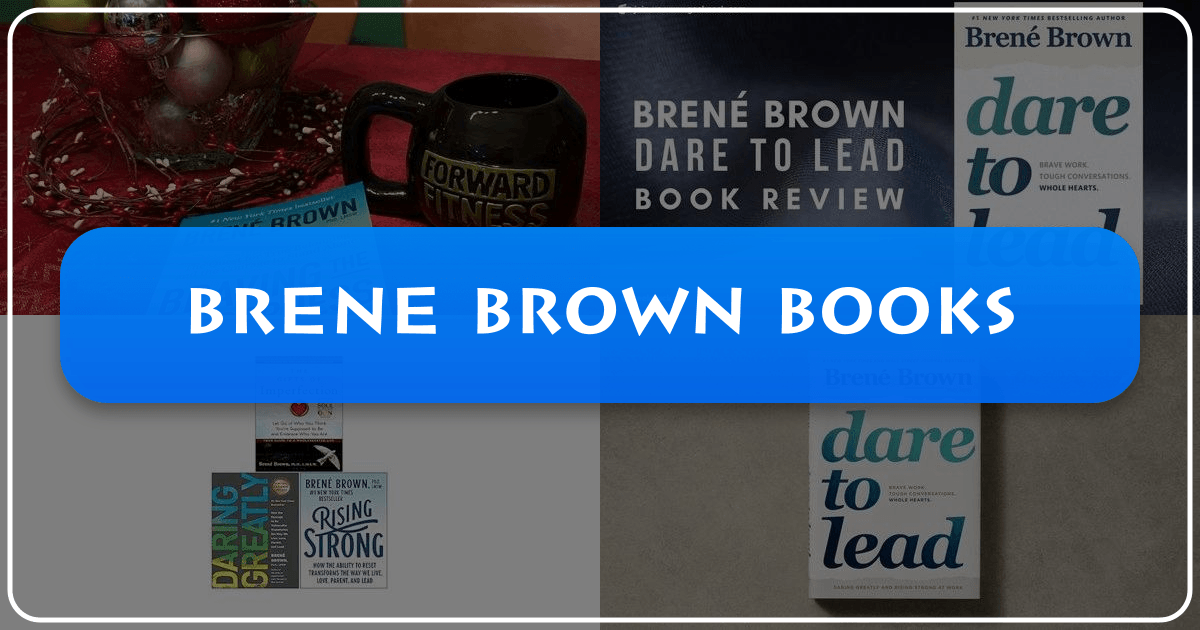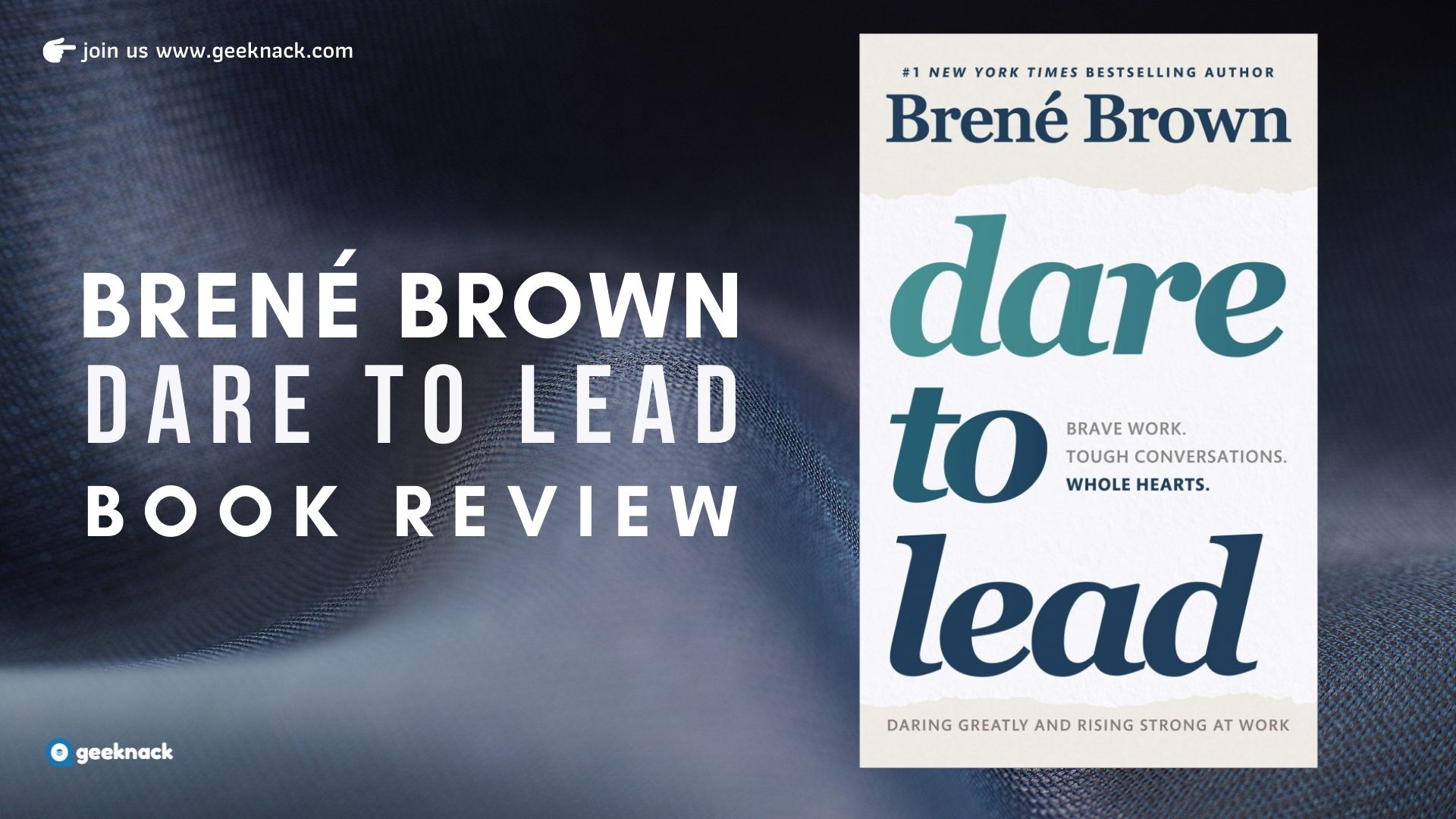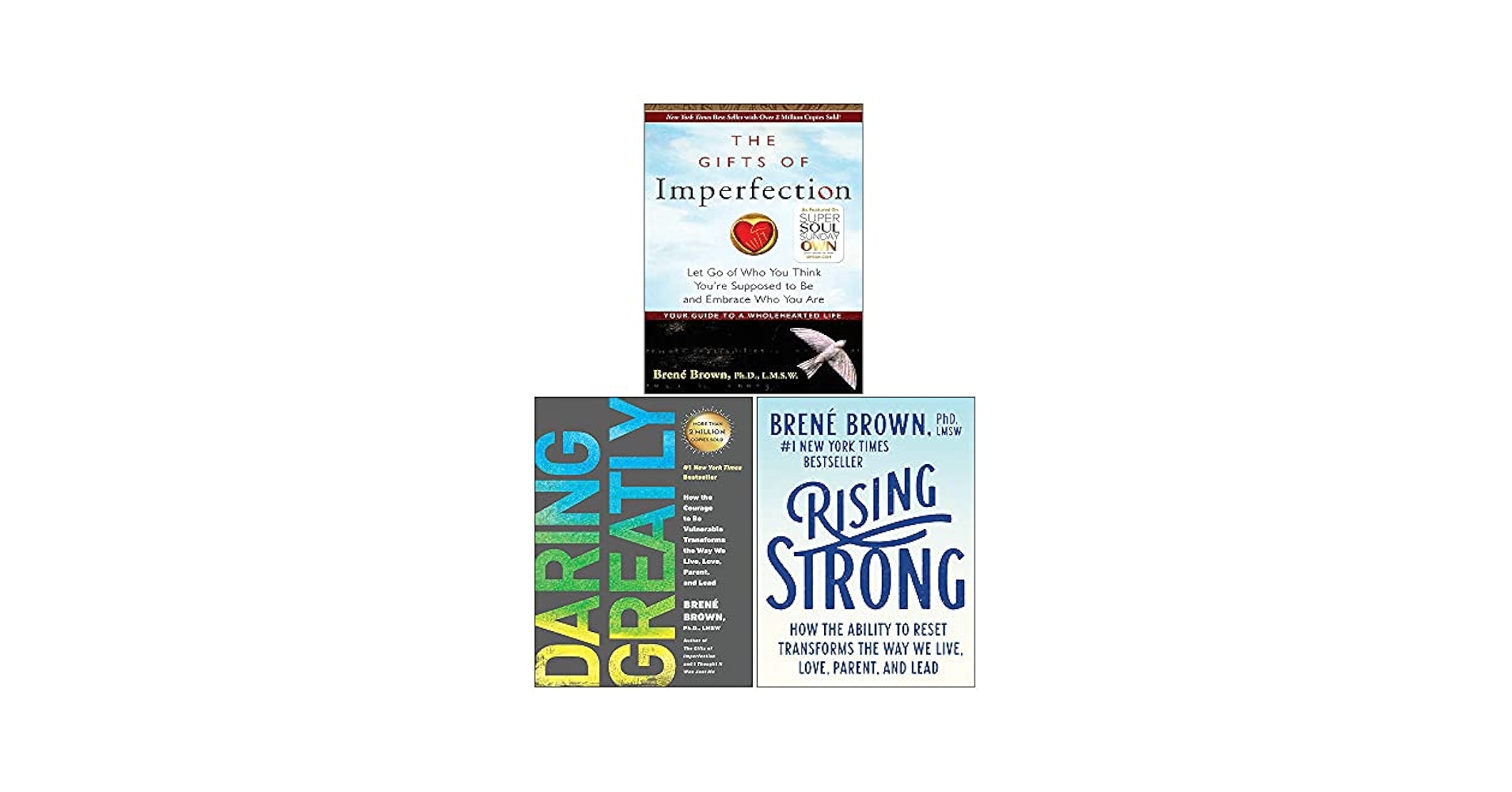Brené Brown Books: A Comprehensive Guide

Brené Brown’s work has resonated deeply with millions, offering a transformative perspective on vulnerability, courage, and meaningful connection. Her books have become modern classics, sparking conversations and inspiring positive change in personal and professional lives. This comprehensive guide explores Brené Brown’s books, delving into their genres, key themes, educational value, and lasting cultural impact. We will examine each book individually, explore Brown’s writing style and inspirations, and consider the broader implications of her work on various aspects of society.
Navigating Brené Brown’s Book Collection: Where to Start?
Many newcomers to Brené Brown’s work often ask: “Which book should I read first?” While there’s no single “right” answer, the best starting point depends on your specific interests and goals. Brown herself often suggests starting with The Gifts of Imperfection, but let’s examine each title to understand its unique contribution.
Understanding the Book Order and Themes:

-
The Gifts of Imperfection: This book serves as an excellent foundation for understanding Brown’s overall philosophy. It explores the ten guideposts for wholehearted living, focusing on cultivating self-compassion, authenticity, and letting go of perfectionism. It’s an introspective read ideal for those beginning their journey toward self-acceptance and personal growth.
-
I Thought It Was Just Me (but it isn’t): This was Brown’s first book and dives deep into the experience of shame, particularly among women. While insightful, it’s recommended to read The Gifts of Imperfection first. This lays the groundwork for understanding the complexities of shame and how to cultivate resilience.
-
Daring Greatly: This book focuses specifically on courage and vulnerability, exploring how embracing vulnerability is key to living a wholehearted life. It’s particularly helpful for those seeking practical strategies for navigating risk and emotional exposure in various aspects of life. It is also recommended as a starting point for readers particularly interested in courage or the application of Brown’s work within a workplace setting. Following this with Rising Strong provides a powerful pairing as Daring Greatly emphasizes vulnerability as courage while Rising Strong offers strategies to work through its challenging aftermath.
-
Rising Strong: This volume follows up on Daring Greatly, addressing the inevitable setbacks and “heartbreak” that accompany courageous acts. Brown guides readers through a process of understanding the narratives we create around difficult experiences, learning how to “re-write” these stories for personal growth and resilience.
-
Braving the Wilderness: This book stands apart from the others, focusing on the importance of belonging in a polarized culture. It’s a timely and relevant exploration of navigating differences and finding connection despite ideological divides. It can be read at any point in the progression of Brown’s work, as it’s a standalone piece emphasizing belonging and connection in a sometimes divisive world.
-
Dare to Lead: This work focuses on applying Brown’s concepts to leadership within workplaces. It’s a tactical and actionable guide for individuals and teams to cultivate a culture of courage and vulnerability. The book provides downloadable workbooks and tools to support implementation.
-
Atlas of the Heart: Mapping Meaningful Connection and the Language of Human Experience: This work represents a significant expansion on Brown’s previous explorations, providing a comprehensive overview of 87 emotions and experiences which contribute to human connection. This book offers vocabulary and tools to enhance self-awareness and improve communication, leading to stronger connections in personal and professional relationships. It emphasizes the importance of connecting with oneself as a foundation for meaningful connection with others.
Choosing where to start depends on your personal preferences: If you want a holistic introduction to Brown’s ideas, The Gifts of Imperfection is a great starting point. If you’re seeking immediate strategies for increasing courage, Daring Greatly is a strong choice. And if your interest is primarily in understanding shame or the complexities of emotions and human experience, I Thought It Was Just Me or Atlas of the Heart, respectively, are well worth the read.
Brené Brown: Author Profile

Brené Brown is a research professor at the University of Houston and a visiting professor in management at the University of Texas at Austin. Her work focuses on vulnerability, courage, shame, and empathy. She’s a prolific speaker, and her TEDx Talk, “The Power of Vulnerability,” has garnered over 50 million views, highlighting the significant cultural impact of her message.
Brené Brown’s Writing Style and Inspirations:
Brown’s writing style is characterized by its accessibility and emotional honesty. She blends rigorous research with deeply personal anecdotes, creating a connection with readers that feels both intimate and scholarly. Her work is grounded in qualitative research, and often features stories from her research participants, directly demonstrating the principles she explores. This approachable yet powerful style is instrumental in her success in reaching a large audience and inspiring significant cultural change.

Her inspirations are diverse: She draws from various fields of study, including psychology, sociology, spirituality, and leadership studies. The overarching foundation is her own research, directly influencing her work. However, her style draws upon a storytelling style and use of quotes by influential figures to add depth and context to her work. She acknowledges her research participants as major sources of inspiration, emphasizing the power of their lived experiences in shaping her understanding.
Brené Brown’s Famous Works:
Her most widely recognized books, all New York Times bestsellers, include: The Gifts of Imperfection, Daring Greatly, Rising Strong, Braving the Wilderness, and Dare to Lead. Her newest book, Atlas of the Heart, continues this trend of both academic rigor and emotional accessibility. These books have collectively made a significant cultural impact, popularizing concepts like vulnerability, wholeheartedness, and the importance of meaningful connection.
Reading and Learning from Brené Brown: Key Takeaways
Reading Brené Brown’s books offers more than just intellectual engagement; it provides a powerful path to personal and professional transformation. The core of her work involves building the courage to be vulnerable.
Educational Value and Life Lessons:
Brown’s books are valuable educational resources because they present complex psychological concepts in an accessible and relatable manner. They offer:
-
A deeper understanding of shame, vulnerability, and courage: She articulates these complex emotions with clarity, helping readers understand their own experiences and develop coping mechanisms.
-
Practical strategies for building resilience and navigating difficult emotions: Her books provide tangible tools and frameworks for responding to adversity, fostering personal growth, and building more resilient mindsets.
-
A framework for creating meaningful connections: The books emphasize the role of authenticity and vulnerability in forging deeper relationships.
The life lessons derived from her work are transformative: They encourage self-compassion, embracing imperfections, and moving beyond the fear of judgment. She encourages readers to step into the “arena” of life, fully embracing the experience of being seen, even if it brings uncertainty.
Reading Habits and Application of Brown’s Work:
To maximize the value of reading Brené Brown, consider:
-
Active reading: Pause to reflect on her ideas, relate them to your own life experiences, and identify areas for growth.
-
Journaling: Keep a journal to record thoughts, emotions, and insights gained from reading.
-
Discussion: Discuss her concepts with others to gain diverse perspectives and deepen understanding.
-
Implementation: Apply her tools and strategies to real-life situations to promote personal transformation.
Libraries and Archives: Accessing Brené Brown’s Work
Brené Brown’s books are widely available in public and digital libraries worldwide, ensuring accessibility for a broad audience. Her work may also be found in university and academic archives, reflecting its significance in scholarly discourse within the social sciences.
The Cultural Impact of Brené Brown’s Work
Brené Brown’s work has transcended the realm of academic research to exert a powerful influence on various aspects of modern culture.
Literary Influence and Adaptations:
Her books have significantly impacted popular discussions about vulnerability, courage, and shame. Her ideas have influenced other writers, and her books have spurred numerous discussions and conversations online and in social groups. Brown’s work has been adapted for various media, including podcasts and a Netflix special, further amplifying her message.
Awards and Recognition:
Brown has received numerous awards and recognitions for her research and writing, including multiple New York Times bestsellers. This confirms her status as a leading authority on vulnerability and related topics, emphasizing the importance and widespread appreciation of her work.
Communities and Networks:
Her work has fostered numerous communities and networks dedicated to personal growth and courageous leadership. This shows the power of her message to bring people together and foster support for those working to integrate her ideas into their lives.
In conclusion, Brené Brown’s books offer a valuable blend of insightful research and practical application, empowering readers to live more authentic, courageous, and connected lives. Her work’s profound cultural impact underscores the importance of vulnerability and self-compassion in a world that often values perfection and control above all else. Whether you’re a seasoned reader or new to her work, exploring Brené Brown’s books is a journey towards greater self-understanding and personal growth.